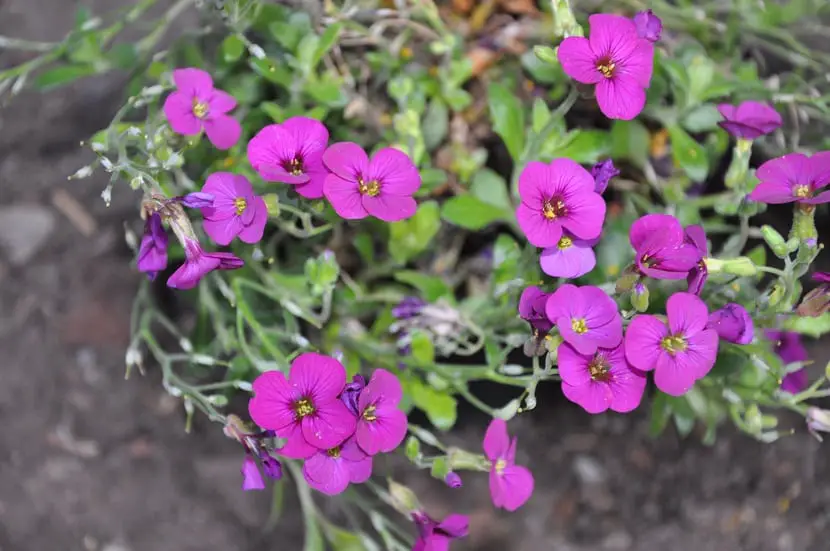
Arabis blepharophylla, like Caucasian Arabis, also belongs to the Brassicaceae family. It comes from the coasts of California, for this reason develops quite well in places that are very close to the sea and that they also have a climate that is temperate.
This is a plant that is also known by the names of Erysimum blepharophyllum, rock cress, Arabette de Californie, Coast Rock Cress and also as Arabette des rochers, which was first discovered in 1841 and it is a plant that we can use as a ground cover and also if we want to keep the soil of the slopes fixed.
Characteristics of the Arabis blepharophylla

The leaves of this plant are elongated in shape and greenish-grayThey are quite durable plants.
The Arabis blepharophylla is capable of growing in a rounded manner. It has stems that are long and its flowers grow from its ends. These have a purple colorwhich begin to appear in March and remain in bloom until June. Its flowers have a quite striking scentwith a fragrance that is sweet to butterflies and some other insects as well. This plant is not large in size, it can reach a measurement of between 20 to 50 cm high and extends in the same measure throughout the width.
Despite the fact that this is a durable plant, does not have the chance of having too long a life. After the second year of life, their appearance ends up declining.
The positive side is that this plant has the ability to pollinate itself in a fairly simple way, as it is through the dispersal of its seeds. Likewise, it can tolerate high temperatures and also some drought during the summer. It is a strong plantwhich can withstand temperatures between -12 ° C and -15 ° C.
Arabis blepharophylla care
This is a plant that requires direct sunlight and mild temperatures. However, is able to grow in soils that are poor in nutrients. It is recommended that the soil has sufficient drainage and also a high content of organic matter and with respect to transplanting, it is best to do it in autumn.
To water the plant, it is important that we do it in a moderate way throughout the year and we also have to remember, not to add more land to it. The compost that we have to use is manure, so that we can sow them.
We can add a little fertilizer that is mineral throughout the flowering stage.
Pests of Arabis blepharophylla

The aphids, leaf miners, caterpillars and also whitefliesThey are the pests that usually seriously affect this plant, therefore we have to do everything necessary to prevent them from appearing.
The Arabis blepharophylla it is quite sensitive to fungal attacksespecially plasmodiophora brassicae. This causes tumors that are rooted to form, apart from chlorosis occurring and the leaves rotting.
Culture of the Arabis blepharophylla
This a plant that is multiplies through seeds. It is recommended that we sow them in a pot that we must cover when autumn arrives. When spring arrives we must move the shoots to the soil of the garden or balcony, being careful with the roots so as not to damage them and if we want it to have an excellent development, it is important that we place it in a healthy and fertile soil.
